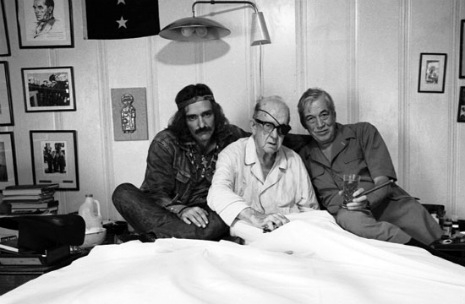
An incredible photograph of Dennis Hopper and John Ford and John Huston. Three-in-a-bed, and three legendary mavericks of cinema.
Via If Charlie Parker Was a Gunslinger

An incredible photograph of Dennis Hopper and John Ford and John Huston. Three-in-a-bed, and three legendary mavericks of cinema.
Via If Charlie Parker Was a Gunslinger
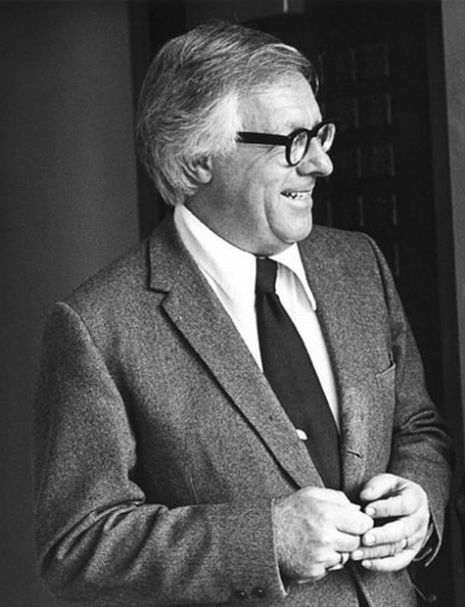
Ray Bradbury, author of Fahrenheit 451, Something Wicked This Way Comes, Dandelion Wine, The Illustrated Man and The Martian Chronicles, died yesterday, June 5th, at the age of 91. Bradbury was a colossus of modern fiction, writing everything form fantasy, science-, and speculative-fiction to comedy, crime and mystery. He wrote twenty-seven novels, several screenplays, most notably for John Huston’s film version of Moby Dick, as well as plays, and hundreds of classic short stories.
Bradbury was an immense talent, yet in the early part of his career, his success as a mass market “pulp” author often led critics to overlook the quality of his writing, and its seismic influence on others - his fiction formed the template for future speculative science-fiction and fantasy writers to follow. Bradbury had a beautiful, poetic and lyrical style of writing, most notable in Dandelion Wine, which made his authorial voice unmistakable.
Indeed the quality of Bradbury’s writing helped science-fiction out of the pulp ghetto into the hallowed groves of literature. Though most associated with that genre, Bradbury denied he was a science-fiction writer, instead claimed he was a fantasy writer whose work owed much to the traditions of classical literature:
“First of all, I don’t write science fiction. I’ve only done one science fiction book and that’s Fahrenheit 451, based on reality. It was named so to represent the temperature at which paper ignites. Science fiction is a depiction of the real. Fantasy is a depiction of the unreal. So Martian Chronicles is not science fiction, it’s fantasy. It couldn’t happen, you see? That’s the reason it’s going to be around a long time—because it’s a Greek myth, and myths have staying power.”
Born in Waukegan, Illinois on August 22, 1920, Bradbury grew up in small town America - a world of dusty roads, with few cars, and tarmac avenues with old trolley buses ploughing the metal rails along main street. He also once claimed, in a BBC documentary, that his memory and experience was the source for much of his writing, and said his memory stretched back to his earliest experiences as a baby, being breast-fed in his mother’s arms.
He grew up reading books and watching Flash Gordon serials at the local cinema, and monster movies with Boris Karloff, while following the adventures of heroes in the early garish comics that later went on to deliver Batman, Superman and Tales from the Crypt.
“Libraries raised me. I don’t believe in colleges and universities. I believe in libraries because most students don’t have any money. When I graduated from high school, it was during the Depression and we had no money. I couldn’t go to college, so I went to the library three days a week for 10 years.”
Reading inspired his writing and Bradbury started his own fictions, eventually submitting short stories to pulp magazines in his teens - his first published story was “Hollerbochen’s Dilemma”, which appeared in the fanzine Imagination! in January, 1938. He received his first check of $15 for his story “Pendulum” (co-written with Henry Hasse) in 1941, when it was published in Super Science Stories. By 1942, he was able to have a career as a writer, writing stories for the various pulp magazines that were then available.
He progressed from stories to novels, with first big success being The Martian Chronicles, which was aided by a chance meeting with author Christopher Isherwood, who admired Bradbury’s work, and passed the book onto a critic who gave it a glowing review. From there, Bradbury had a career befitting the talents of such a great and marvelous man.
Bradbury’s influence has infused much of our cultural world - from films to comics, science to the imagined landscape of small town America, which is still very much as he described it in his fictions. Indeed, Bradbury’s vision of small town America was a precursor to Stephen King’s Castle Rock.
I greatly admire Bradbury’s work, and like everyone else grew-up reading his books, and regularly returned to them in my adult years. It seems as we grow older that all we reap is death, and this year has been a harsh harvest. Still, we should perhaps recall Bradbury’s line from Fahrenheit 451:
“Stuff your eyes with wonder. Live as if you’d drop dead in ten seconds. See the world. It’s more fantastic than any dream made up or paid for in factories.”
R.I.P. Ray Bradbury 1920-2012.

Candy should, I repeat should be off the scale incredible. But it’s not.
Candy was a film that was always talked about, but no one ever saw it. The poster of Candy topless in the airplane cockpit would always be for sale in the back pages of magazines like “Famous Monsters of Filmland” next to ones of King Kong and Frankenstein and it became a familiar image of the era. But the movie you never saw. Not on any late night movie show, never on a Sunday morning “Million Dollar Movie” or anything like that, Candy was seemingly banned from TV for being too racy and for whatever reason was never released on VHS either. Nor was it ever on HBO or Showtime. It was the great lost movie in my eyes.
I became mildly obsessed with this film I could never see and went about collecting movie posters, lobby cards, publicity photos and I own several different versions of the novel by Terry Southern and Mason Hoffenberg with different groovy covers. The mythical Candy became a cult movie Holy Grail for me. I really built it up in my mind. For years I tried to get hold of a copy in the tape trading underground, but the best I was ever able to find was still unwatchable. Then finally it came out on DVD. It was like Christmas had arrived.
But it sucked! Really sucked. It was such a let down!
I mean just LOOK at the cast: Ringo Starr (Emmanuel, the Mexican gardener), Charles Aznavour (the horny hunchback), Marlon Brando (Grindl, the horny (fake) Indian guru), Richard Burton (MacPhisto, the drunk, horny Welsh poet), James Coburn (egotistical surgeon), John Huston (dirty old man doctor) and Walter Matthau (horny military general). Sugar Ray Robinson and Anita Pallenberg make cameo appearances. How could you go wrong with a cast like that?
Let’s not forget the amazing opening space travel sequence by Douglas Trumbull who went on to make 2001 with Stanley Kubrick. And the soundtrack by The Byrds, Steppenwolf and soundtrack great Dave Grusin (it’s INCREDIBLE and easy to find on audio blogs). The script was adapted by Buck Henry. HOW could this fail?
It even featured the decade defining pulchritude of Miss Teen Sweden, Ewa Aulin, in the title role of “Candy Christian,” the ultimate All-American girl.
But despite all this Candy is a terrible film and even worse, it’s boring.
One of the things that must have mucked up things badly for the production is—and I am just theorizing here—the contracts for the lead actors. These were THE leading actors of the day, all of them top drawer A-list 60s talent. After watching Candy the thought occurred to me that Marlon Brando’s agent probably asked how much screen time Richard Burton was getting and demanded the same for his client. Then James Coburn’s manager asked the same question and demanded equal time for his client and so on and so until each actor was guaranteed “Most Favored Nations” equal screen time. How else to explain the film’s structure? It’s maddening to watch and Candy feels like it’s never going to end.
STILL, I’m not saying it’s so bad you shouldn’t watch it. Actually I think that if this sounds even remotely intriguing to you then it’s definitely worth seeing. It’s not good, no, we’ve already established that fact, but it is a super insane, trippy, campy relic of the 1960s with some of the most iconic actors of the decade behaving like total hambones, each trying to outdo the other in chewing up the scenery.
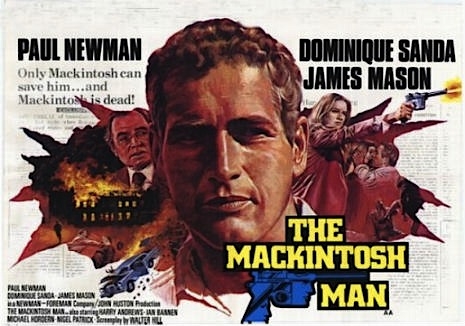
About halfway through The Freedom Trap, author Desmond Bagley reveals his hand towards his sources. It comes around page one hundred, when the central character Owen Stannard is briefed by his boss, Mackintosh:
‘What do you know about the British prison system?’
‘Nothing.’
‘I’ll let you have a copy of the Mountbatten Report,’ he said. ‘You’ll find it fascinating reading. But I’ll give you the gist of it now. Lord Mountbatten found that the British prisons are full of holes as a Swiss cheese. Do you know how many escapes there are each year?’
‘No. There was something about it in the papers a couple of years ago, but I didn’t read it too closely.’
‘More than five hundred. If it’s any less than that they think they’ve had a good year. Of course, most of the escapees are picked up quite soon, but a small percentage get clean away - and that small percentage is rising. It’s a troublesome situation.’
I’d picked up a copy because of its cover, who doesn’t? Maybe the French? As once, most of their covers were all the same - that’s equality for you. The cover had Paul Newman, as Stannard, with suit and tie, gun in hand, and it left a fluid memory of John Huston’s rather fine film version, The Mackintosh Man.
Bagley’s story mixes a little bit of fact with a lot of page-turning fiction. It’s a tale of double agents, the British Secret Service and the Scarperers, a fictional organization that helps long-term prisoners escape gaol - all for the right money. Back to our opening scene. Mackintosh now makes it clear he isn’t interested in the “‘murderers or rapists, homicidal maniacs or ordinary small time thieves’” that escape from gaol, his focus is State Security, and how to stop double agents, like the real-life George Blake, turning up in Moscow, “‘where he chirped his head off.’”
‘For the first time in years someone has come up with a brand new crime. Crime is just like any other business - it’s conducted only for profit - and someone has figured a way to make profit out of getting people out of prison…
...an organization was set up, dedicated to springing long-term prisoners who could pay enough, and you be surprised how many of those there are. And once such an organization gets going, like any other business it tends to expand, and whoever is running it has gone looking for custom - and he doesn’t care where the money comes from, either.’
‘The Russians?’
‘Who else?’ said Mackintosh sourly.
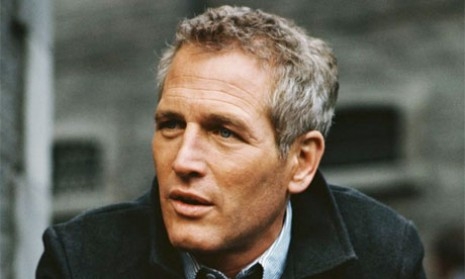
It was the Cold War and the Russians were still off the Christmas card list. The way Bagley tells it, the Red Menace was everywhere. In the Freedom Trap, the Reds actively liberating double agents like Slade - as the character Stannard explains when he meets Slade in prison:
It was about this time that I first met Slade. He was a new boy inside for the first offence and he’d got forty-two years, but I don’t believe the First Offenders Act covers espionage. I had heard about him before, of course: the news broadcasts had been full of the Slade Trial. Since most of the juicy bits had been told in camera no one really knew what Slade had been up to, but from all accounts he was the biggest catch since Blake.
To anyone reading this in the early seventies it may have seemed like non-fiction - as it came almost a decade after notorious double-agent, George Blake had been sentenced to forty-two years in jail, and who, only 5 years later, had managed to escape from Wormwood Scrubs Prison, in 1966. Then, it was commonly believed Blake had been helped by an organization, just like Bagley’s fictional “Scarperers”, paid for by the K.G.B., and run by a petty criminal, Sean Bourke.
It wasn’t just fiction writers who believed this was what happened, respected journalist E. H. Cookridge stated in his 1970 biography, George Blake Double Agent that the K.G.B. had financed Blake’s escape, claiming the cost for such an operation was “mere chickenfeed”, and Blake was far too important a spy for the Russians to lose.
This was all fine on paper, but in reality both Bagley and Cookridge were wrong, as Blake’s escape from prison was the work of amateurs and more reminiscent of Carry On Spying than Funeral in Berlin.
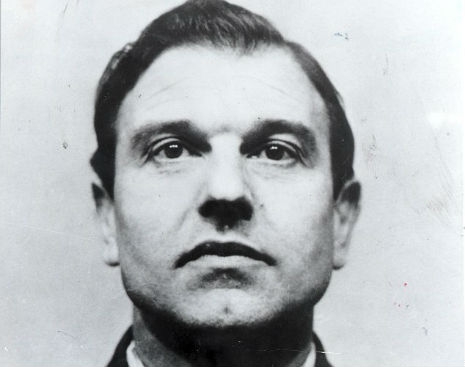
George Blake was born George Behar in the Netherlands in 1922. During the Second World War he worked as part of the Dutch Resistance against the invading German army. Blake was so successful he was soon on the Gestapo’s most wanted list. His keenness verged on the fanatical, something which would become more apparent as Blake grew older. His experience with the Resistance highlighted his seemingly natural talent for subterfuge. Arrested by the Germans, Blake just managed to escape, following his family out of Holland to England.
In Britain, Behar was at first frustrated by the long immigration process required to ensure no sneaky German agents were hidden amongst the influx of refugees. To fit in with his adopted country, Behar changed his name to the anglicized Blake, and applied for work in the Navy, his intention was to become a spy, and return to Holland. It didn’t quite happen that way, as his superiors were more than a little suspicious of Blake’s methods which were straight out of the fictional Richard Hannay, and anticipated the fantasy of James Bond and even Matt Helm. It’s worth considering whether Ian Fleming ever met Blake during the war years and if he had, did Blake fuel the writer’s imagination?
After the war, Blake became fully fledged spy, working undercover as part of the diplomatic service. This was when his B-movie imagination kicked-in - writing in invisible ink, arranging bizarre pick-ups for worthless information and running a team of spies.
In 1950, Blake found himself under a different invading army when he was posted to Seoul, Korea. He was captured by insurgents form the North and held prisoner. The North Koreans had no sympathy for prisoners of war, and Blake and his fellow POWs were treated barbarically and forced on a long death march from city to bombed city. Cookridge described part of it thus:
The death march went on for many days. Occasionally there were overnight stops in villages. Usually the civilian internees were packed into one room which had no windows and was covered with vermin and excrement….
...Those who fell by the side of the road, watching mutely as the column passed them by…“We heard many shots…the dying were pushed into the ditch.”
They were repeatedly moved village to village, until they reached their destination, Chung-Kang-Djin. On arrival, the POWs made a rough estimate of the casualties - a least one hundred had died or been shot during the march, just over a quarter of their number. But this was only the start, as they were handed over to the Chinese military, who began a process of brainwashing techniques on the beleaguered inmates.
Blake has since claimed he was never brain-washed, claiming he turned to Soviet Communism because of the horrors witnessed during the Korean War. Whatever the truth, the attempts at brainwashing were later confirmed by his fellow POWs.
After negotiations for a cease-fire, Blake returned home a hero to Britain. Ironically, it wasn’t long before he offered his services to the KGB, and so began his 9-year career as a dastardly double-agent.
Working for the British Secret Service, Blake was transferred to Berlin where he set-up and ran his own spy ring for the K.G.B. Blake’s love of cloak and dagger defined his time in Berlin. He was responsible for the exposure and deaths of an estimated 400 agents - something else he later denied, though his K.G.B. bosses have since confirmed this number as correct. Blake verged on the fanatical with his work, having no compunction in hiring spies to work for him, then exposing them as traitors, as Cookridge explains:
I have a long list of agents Blake had betrayed between 1955 and 1959, but in deference to the regulations of the Official Secrets Act, I shall mention only a few, whose names became known through “show trials” in East Germany.
In 1955 Hans Joachim Koch, a then 43-year-old radio operator, was arrested when emptying a “dead letter box” in Pankow Park, which Blake had arranged and of which he had given the information to the K.G.B….
At about the same time Johann Baumgart, an official of the East German railways, who had produced twenty-five remarkable reports about railway transports, was given away by Blake and sentenced to fifteen years’ imprisonment….
Ewald Jantke, a former Luftwaffe radio operator, and Arno Gugel, son of a Gestapo official, who with a young woman called Ursula Lehmann had formed a successful “cell” in East Germany, were betrayed when Jankte became too cocky and joined the East German People’s Police…
Blake was instrumental in “burning” an outpost established in Dresden, which kept in contact with the secret service in West Berlin by exchanging stamps for collectors…marked with microdots…
The list goes on, but you get the idea, it was all fun and games straight from a John Le Carre. It beggars belief how he wasn’t uncovered, or even suspected as a double-agent sooner, until you appreciate nearly the whole of the British Secret Service was a private members’ club for Soviet double agents, most famously the Cambridge Five (Guy Burgess, Kim Philby, Donald Maclean, Anthony Blunt, John Cairncross) and most controversially, the suggestion Director General of MI5, Roger Hollis was also working for the K.G.B.
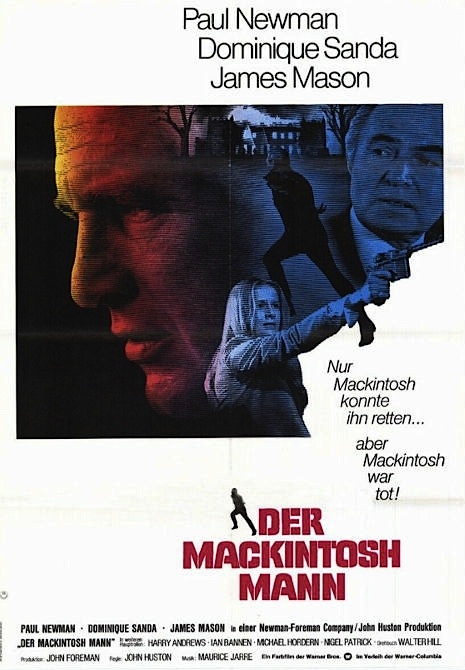
Blake had a good run, destroying most of MI6’s operations in eastern Europe, seeding double agents, and notoriously revealing the tunnel the Allies had built under the Berlin Wall. But all things must pass, and in 1961, the game was up, Blake was arrested sent to trial, parts of which were held in camera for security reasons. He pleaded guilty to the five counts against him, and expected to receive a sentence of 14 years imprisonment. However, Lord Parker of Waddington imposed a sentence of 14 years imprisonment on each of the 5 counts:
“Those in respect of counts one, two and three will be consecutive, and those in respect of counts four and five will be concurrent, making a total of forty-two tears; imprisonment.”
Forty-two years, it was “the longest prison sentence ever imposed in modern British history…” And herein lies the tale of his escape.
Blake wasn’t set free by the machinations of the K.G.B., but by passionate amateurs, who disagreed with Blake’s harsh sentencing.
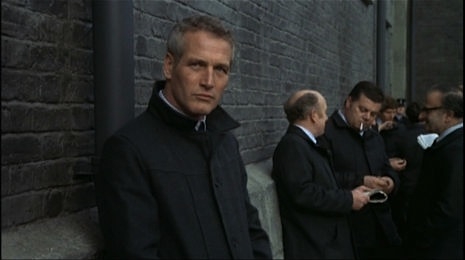
When he was in Wormwood Scrubs, Blake came in to contact with Michael Randle and Pat Pottle, two men imprisoned for their non-violent protest against USAF Weatherfield, a British airbase used by the American Air Force during the Cold War.
Randle was a conscientious objector, and a member of the Aldermaston March Committee which organised the first Aldermaston March against British nuclear weapons, in Easter 1958. Pottle was a founder member of the Committee of 100, an anti-nuclear direct action group which broke away from Campaign for Nuclear Disarmament. Their outrage at the “vicious” sentence imposed on Blake saw Pottle and Randle team up, once they were released from prison, with another ex-con Séan Bourke, in a bold plan to set Blake free.
Prior to his escape, the police and prison authorities received numerous warnings that Blake would make a bid for freedom. Security was tightened but it was to no avail, as the BBC reported on October 22 1966:
One of Britain’s most notorious double-agents, George Blake, has escaped from prison in London after a daring break-out believed to have been masterminded by the Soviet Union.
Wardens at Wormwood Scrubs prison last saw him at the evening roll call, at 1730 GMT.
An hour-and-a-half later, his cell was discovered to be empty.
After a short search, the escape route was found. Bars in a window at the end of a landing had been sawn away and a rope ladder hung down inside the prison wall.
Sean Bourke had prepared a ladder made from nylon thread and knitting needles. As in Bagley’s book, the ladder was thrown over a perimeter wall, where Slade/Blake climbed over to an awaiting vehicle. Unlike the novel, Blake wasn’t liberated to Ireland and a well staffed safe house, but was moved apartment to apartment, bed-sit to bed-sit by Bourke, Pottle and Randle, never staying anywhere long enough to attract police attention.
Eventually, in a farcical denouement, Blake was driven by Randle, in a Commer Dormobile from London to Berlin, and then through to East Germany. Through the crucial parts of the journey, Blake remained hidden under the bench seat, with Randle’s children sitting comfortably on top. The incident made fools of the security and secret services, but revealed the ability of committed individuals to change history.
Blake became a hero in Soviet Russia, but his actions seemed pointless after Perestroika. In 1990, he published his autobiography No Other Choice, and claimed his time spent in Moscow had been the happiest of his life. Sean Bourke dined out on the escape story for years, becoming the focus for media attention, and, of course, Simon Gray famously turned the relationship between Blake and Bourke in prison into his play Cell Mates- the production Stephen Fry ran out on, in 1995.
In June 1991, Randle and Pottle were eventually put on trial for their involvement in Blake’s escape, but were found not guilty by a jury, after arguing that, while they in no way condoned Blake’s espionage activities for either side, they were right to help him because the forty-two year sentence he received was inhuman and hypocritical.